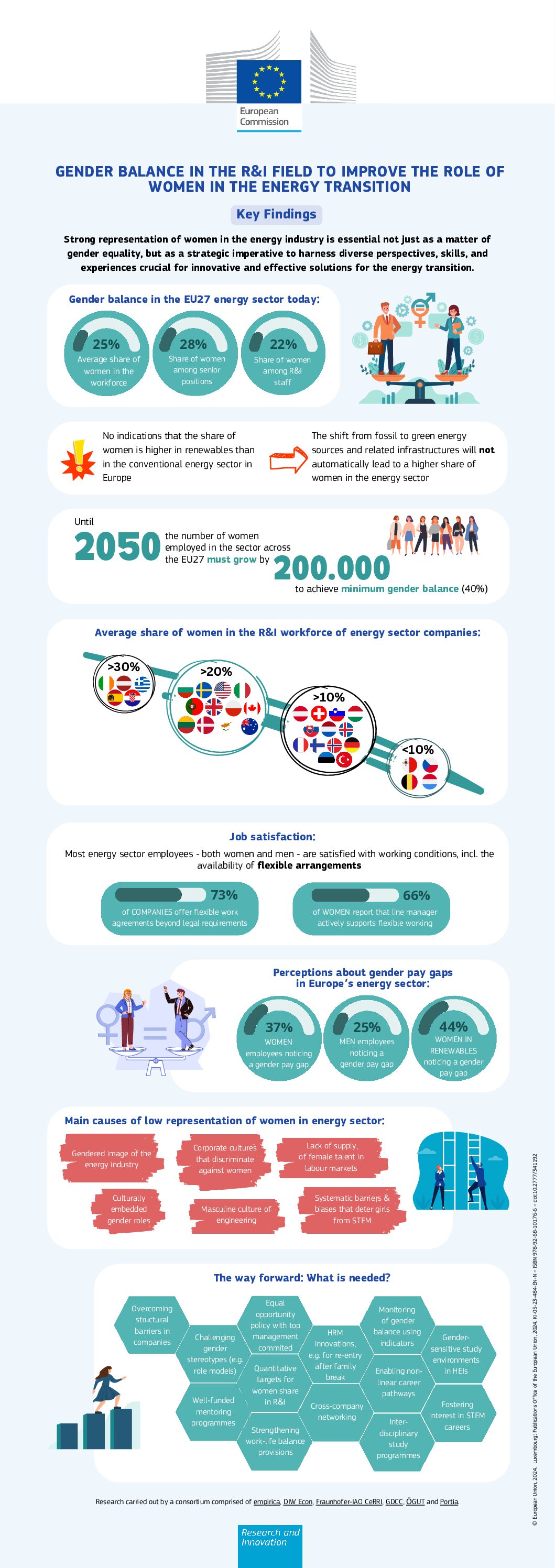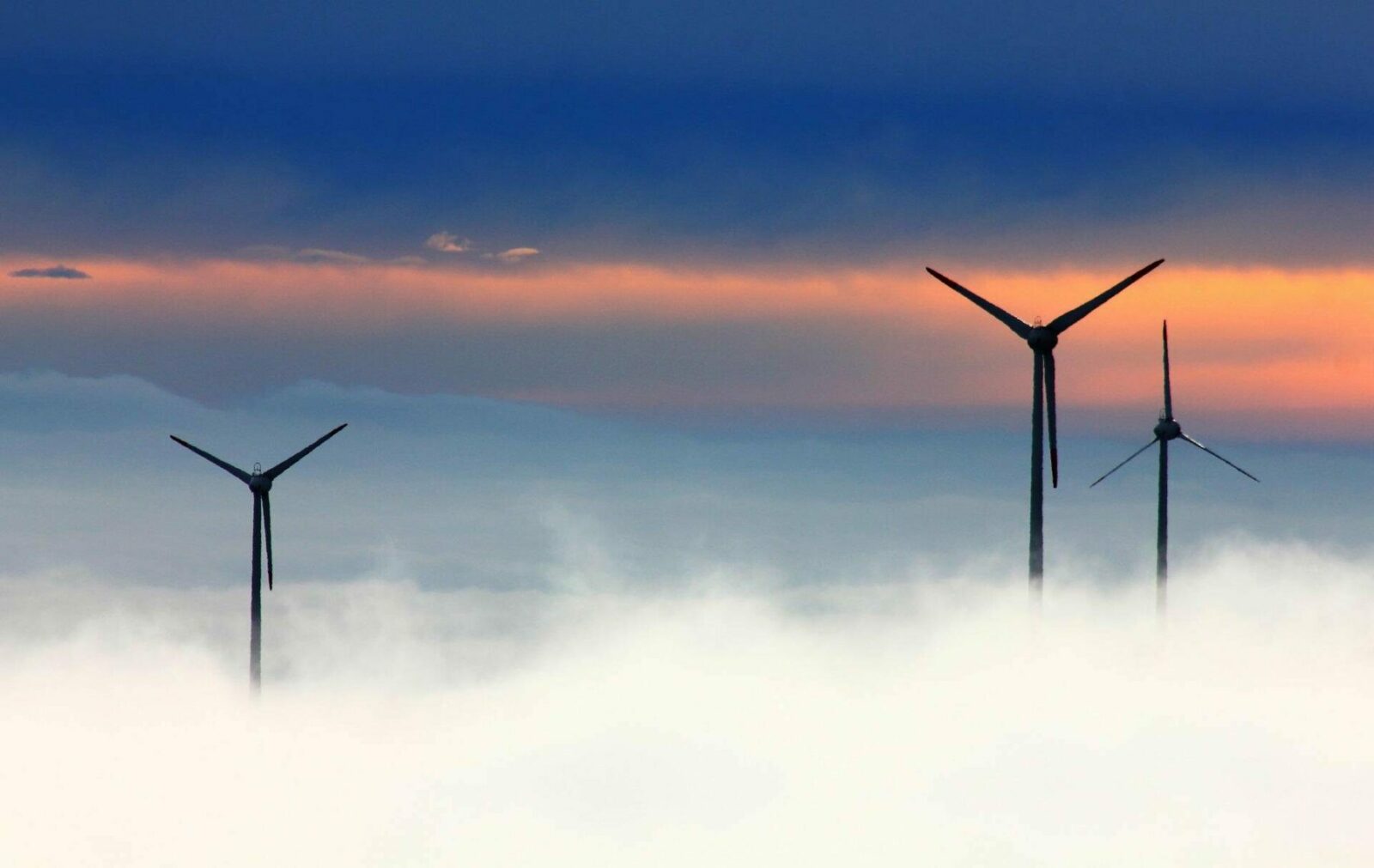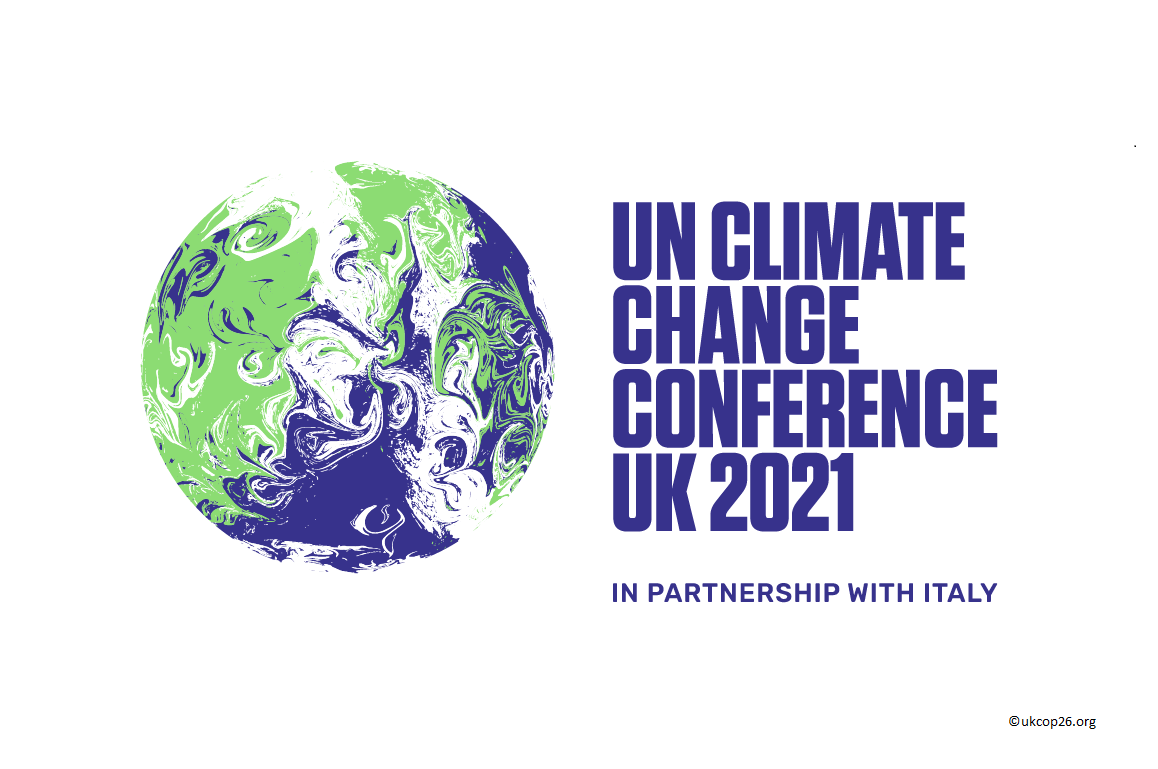
In the modern world, technology shapes nearly every aspect of our lives. However, what often goes unnoticed is that technology development and adoption are not gender-neutral processes. Nowhere is this more evident than in the energy sector, where the representation of women has historically been obscure. A landmark study commissioned by the European Climate, Infrastructure and Environment Executive Agency (CINEA) in collaboration with empirica, Portia, Frauenhofer-IAO CeRRI, DIW-Econ, GDCC and ÖGUT sheds light on gender balance in R&I to improve the role of women in the energy transition.
Gender Disparities Across Energy Technologies
One striking finding of the study is the profound impact of technology type, maturity level, and distribution characteristics on gender representation across various branches of the energy industry. For instance, the research revealed that the heat pump sector exhibits the highest male dominance, whereas the wind energy sector boasts a more balanced gender representation. This disparity underscores the complex interplay between technology adoption and gender equality metrics within the energy domain. However, there is no evidence suggesting that the proportion of women is greater in renewable energy compared to the traditional energy sector in Europe. The transition from fossil fuels to renewable sources and associated infrastructures does not inherently result in an increased representation of women in the energy industry.
Key Insights from Student Perspectives
The study delves into the attitudes of higher education students regarding climate change, the energy transition, and their impact on career choices, with a focus on gender disparities. Female students, in particular, express greater concern about climate change compared to their male counterparts. Additionally, both male and female students acknowledge the critical role of the energy transition in addressing global challenges. Notably, students perceive their opinions on climate change and the energy transition as influential factors in their career decisions. This trend presents a unique opportunity for energy sector employers to attract the next generation of graduates by emphasizing the role their employees play in addressing these pivotal world challenges.
Despite gender disparities, there already exists significant interest among tertiary education students, especially those enrolled in STEM programs, in pursuing careers in the energy sector. However, a closer examination of European countries, particularly Germany, unveils a concerning reality: it possesses one of the lowest percentages of women obtaining bachelor’s degrees in engineering. This educational gender gap raises alarms about the pipeline of female talent entering the energy sector workforce. Consequently, efforts to make the sector appealing to individuals without an engineering background are imperative to foster greater diversity and inclusivity. Moreover, interventions challenging gender stereotypes among girls regarding suitable career paths emerge as crucial.
Strong Representation of Women: A Strategic Imperative
Strong representation of women in the energy industry is not just a matter of gender equality but a strategic imperative. Diverse perspectives, skills, and experiences are crucial for innovative and effective solutions for the energy transition. However, the current reality falls short; across the EU27, only 25% of the energy workforce comprises women, with even fewer in research and innovation roles.
To achieve a minimum gender balance by 2050, the number of women employed in the sector across the EU27 must grow significantly. Yet, the main causes of the low representation of women in the energy sector are multifaceted, including gendered industry images, systematic barriers in STEM fields, discriminatory corporate cultures, and culturally embedded gender roles. Overcoming these challenges requires a concerted effort to challenge stereotypes, implement equal opportunity policies, and foster interest in STEM careers.
Despite this, the majority of energy sector employees, regardless of gender, express satisfaction with their working conditions, including the availability of flexible arrangements. However, disparities persist. 37% of women employees and 25% of men employees report observing a gender pay gap, with an even higher percentage—44%—noted among women working in renewables.
The Way Forward: What is Needed?
To address these challenges, structural barriers in companies must be overcome, gender stereotypes challenged, and well-funded mentoring programs implemented. Additionally, equal opportunity policies with top management commitment, HRM innovations, and interdisciplinary study programs are essential. Monitoring gender balance using indicators and fostering work-life balance provisions are also crucial steps forward.
The unveiling of gender disparities in the energy sector underscores the need for concerted efforts to promote gender equality and diversity within the industry. By addressing educational gaps, challenging stereotypes, and creating inclusive work environments, stakeholders can harness the full potential of all individuals in driving forward the energy transition and tackling global challenges effectively. As we move towards a more sustainable future, fostering gender equality must be at the forefront of our endeavors in the energy sector and beyond.
For further information, have a look at
- the Final Report and Annexes of the study
- the Executive Summary & Policy Briefs
- the 35 Country Briefs
- as well as the Infographic on Key Findings.





